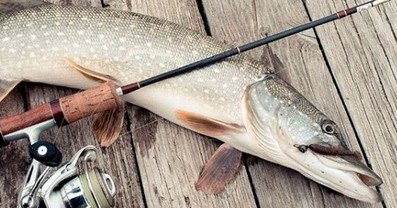Common Carp: An Introduction to this Ubiquitous Fish
Common carp, or Cyprinus carpio, is a freshwater fish that is found in various regions around the world. Its wide distribution, combined with its hardy nature and ability to thrive in different aquatic environments, has made it a popular species for fisheries and aquaculture. In this article, we will explore the biology, history, and current status of the common carp, as well as its ecological and economic significance.

Biology and Habitat
The common carp belongs to the family Cyprinidae, which includes other popular freshwater fish such as minnows and goldfish. They are known for their elongated, stout body, with a large head and two pairs of barbels near their mouth. Carp can range in size from small, finger-length fish to larger specimens that can reach up to 100 pounds in weight.
Carp are capable of surviving in a range of aquatic environments, from small ponds to large rivers and lakes. They are known for their ability to adapt to different water temperatures, oxygen levels, and food sources. Carp are also known for their ability to survive in polluted waters, which has helped them to colonize many waterways around the world.
History and Cultural Significance
The common carp is believed to have originated in Asia, specifically in the Caspian and Aral Seas. The species was introduced to Europe by the Romans in the 4th century AD and quickly became a popular food fish. Carp were also raised in ornamental ponds for their beauty and symbolic significance, particularly in Asian cultures.
In addition to their culinary and cultural importance, carp have also been used for sport fishing for centuries. Carp angling is a popular pastime in many regions of the world, and the species has been introduced to new waters to create recreational fisheries.
Ecological Impact
While carp are known for their hardiness and adaptability, they can have negative impacts on native aquatic ecosystems. In many areas where carp have been introduced, they have outcompeted native fish for food and habitat, causing declines in biodiversity. Carp can also disrupt aquatic vegetation and sediment, making it difficult for other species to survive.
In some cases, carp have been deliberately introduced as a means of controlling aquatic weeds, particularly in the United States. However, this practice has often led to unintended consequences, such as increased turbidity and reduced water quality.
Economic Significance
Carp are an important species for fisheries and aquaculture around the world. They are a popular food fish, particularly in Europe and Asia, and are raised in aquaculture systems to meet demand. Carp are also used for sport fishing, with many commercial fisheries established to support the recreational fishing industry.
In addition to their direct economic value, carp also play a role in nutrient cycling and ecosystem services. Carp raised in aquaculture systems can help to reduce nutrient pollution in waterways, while wild populations can provide important ecosystem functions such as scavenging and seed dispersal.
Current Status and Conservation
While carp are considered a ubiquitous species, their populations have faced some challenges in recent years. In some areas, carp populations have declined due to overfishing or habitat loss, while in others they have become invasive and negatively impacted native ecosystems.
Conclusion
Common carp are a fascinating and important species that have played a significant role in human history and culture. While they have been valued for their economic and ecological significance, their adaptability and hardiness have also contributed to their status as an invasive species in some regions. Understanding the biology, ecology, and cultural significance of common carp can help us to better manage and conserve this ubiquitous fish.
In conclusion, while common carp are often overlooked as a ubiquitous and unremarkable species, they are in fact an incredibly adaptable and important fish. Their history, cultural significance, and economic and ecological importance make them a fascinating subject for study and conservation efforts. By balancing the need for resource management with the preservation of biodiversity, we can ensure that common carp continue to play a valuable role in our ecosystems and communities.
What do the professionals think?

Honored master of sports, captain of the national team of Ukraine.
- in sports since 2013;
- Two-time world champion in sports carp fishing (2017 Hungary and 2018 Serbia);
- Multiple winner of the Championship and Cup of Ukraine;
- Champion of Ukraine 2018 in ice fishing with a spinner.
What affects carp in summer?
what factors generally affect the behavior of carp:
- temperature;
- oxygen;
- fish safety;
- pressure;
- presence or absence of natural feed.
Where the carp is now depends on the combination of these factors. If in the spring the temperature is in the first place, because when the water is cold, the carp just comes out of anabiosis, then the water temperature is very important here and it feels a minimal change of a few degrees, even half a degree.
And in the summer, when it's hot, this temperature recedes into the background, that is, at a water temperature of 26-28 degrees, the carp feels great, it eats great - this is an excellent temperature for the carp to feed, grow, gain weight, and so on.
If there are many fish in the reservoir, if it is hot and if it is daytime. If it is especially calm, then everything depends on oxygen. Where should we look for carp, especially if it is a well-stocked reservoir? - where there is more oxygen. If the reservoir is flowing, then with a huge share of probability, the carp will be in hot summer weather and where there is no wind in the water channel.
What to feed carp in hot summer?
Such a stereotype was formed that if it is hot, if it is summer, then sweet feeding is needed, and if it is not summer and not hot, then fish feeding is needed.
We all always fish for the same baits. We have some kind of feeding that we fish for all season, including the heat. That is, what to feed carp in the heat - feed the same thing in the heat.
Source: https://https//youtu.be/7FxHU7pHshE
FAQs
Are common carp a threatened species?
No, common carp are not considered a threatened species. However, in some areas, populations have declined due to overfishing or habitat loss.
Can common carp be eaten?
Yes, common carp are commonly eaten in many parts of the world.
How long do common carp typically live?
Common carp can live up to 20-30 years in the wild.
Can common carp be raised in aquaculture systems?
Yes, common carp are commonly raised in aquaculture systems around the world.
Do common carp have any predators?
Yes, common carp can be preyed upon by larger fish, birds, and mammals in their natural habitats.



